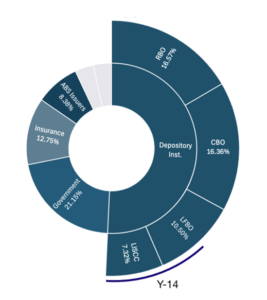What does this mean for investors? The CRE sector faces potential credit misallocation and delayed loss recognition, which could destabilize future market transitions, like office-to-residential conversions.
The Fed’s in-depth, data-packed report provides crucial insights into market dynamics that all CRE investors, developers, and brokers should understand. If you’d like to dig into the full report and its data-rich tables and charts, send the Author a message, and I’ll send a copy of the complete report to you.
Key Insights and Findings
The Risk of Capital Misallocation
Banks with weaker balance sheets are extending maturing loans, often without adjusting for underlying distress, creating a cycle that could restrict the capital needed for other productive CRE investments. For example, capital is needed to support office-to-residential conversions in urban areas, but the prolonged extension of distressed loans ties up funds that could help drive these market shifts:“The resulting credit misallocation might slow down the capital reallocation needed to sustain the transition of real estate markets to the post-pandemic equilibrium.”
The report shows that bank extend-and-pretend behavior leads to significant misallocation in CRE markets by crowding out the origination of new credit. At a conceptual level, banks that saw their capital being eroded by the rapid rise in interest rates have an incentive to extend-and-pretend their existing distressed CRE credit to avoid further depleting their capital. A weak capitalization also forces these banks to forego new lending opportunities as extend-and-pretend mechanically leads to a reduced balance sheet capacity to fund them.
Maturity Wall & Concentrated Risk Exposure
With substantial CRE debt set to mature within the next three to five years, the report emphasizes that this “maturity wall” represents a large and growing risk. Loans due within five years now account for 40% of bank capital as of Q4 2023, creating exposure that could lead to abrupt and concentrated losses if distressed assets default en masse:“CRE mortgages coming due within three years represent 27% of bank marked-to-market capital…and the maturity wall represents a sizable 16% of the aggregate CRE debt held by the banking sector.”
Delayed Loss Recognition and the Consequences of “Extend-and-Pretend”
The reluctance to recognize potential losses not only obscures the true health of bank balance sheets but also risks amplifying the financial impact later on. If banks eventually need to unload these distressed assets rapidly, it could lead to a cascade of devaluations and add strain to bankruptcy courts, especially in scenarios with fire sale dynamics:“Delayed recognition of losses exposes banks…to sudden large losses which can be exacerbated by fire sales dynamics and bankruptcy courts congestion.”
Potential Impacts on CRE Market Liquidity and Stability
As banks hold a significant portion of maturing CRE debt, their hesitance to acknowledge distress could create temporary stability but may lead to liquidity shocks as loans come due in bulk. This lack of transparency could also disrupt liquidity and confidence across CRE markets, potentially affecting property valuations and funding conditions for both new and existing projects.
Key Takeaways for Investors
Be Cautious of the “Maturity Wall”
The high volume of loans coming due in the near term could trigger major shifts in property valuations and investment dynamics. With 16% of CRE debt in banks’ hands potentially coming due in concentrated periods, investors should prepare for possible asset repricing and consider strategies for navigating market shifts.
Evaluate Bank Exposure When Considering CRE Investments
Understanding the financial health of banks holding CRE loans is essential. Given that undercapitalized banks are disproportionately impacted, it’s crucial to assess the credit quality of financing partners and be mindful of potential ripple effects on asset performance and liquidity.
Anticipate Shifts in Market Demand and Capital Allocation
As certain CRE properties, like offices, undergo changes in post-pandemic demand, capital misallocation driven by loan extensions could delay or disrupt trends like residential conversions. Investors may benefit from considering how these trends could influence the viability of various property types and development projects.
This data-rich report provides valuable foresight for navigating today’s CRE market dynamics. By understanding how extend-and-pretend behavior influences bank stability and property valuations, investors can better position themselves in a market primed for significant changes.
Email me for a copy of the complete Federal Reserve Bank of New York Staff Report.




